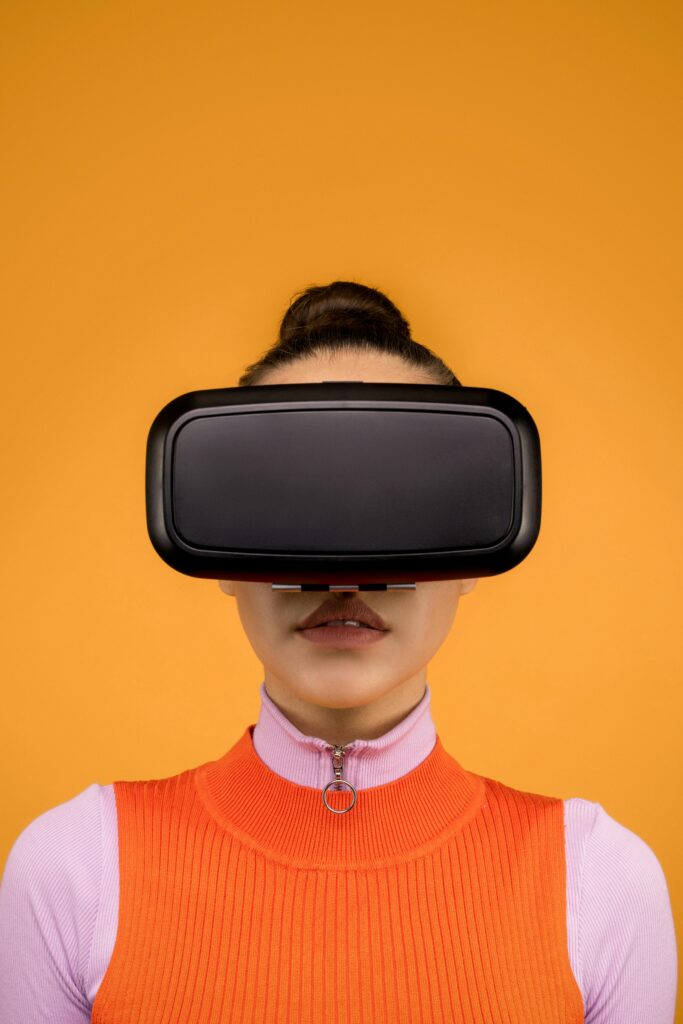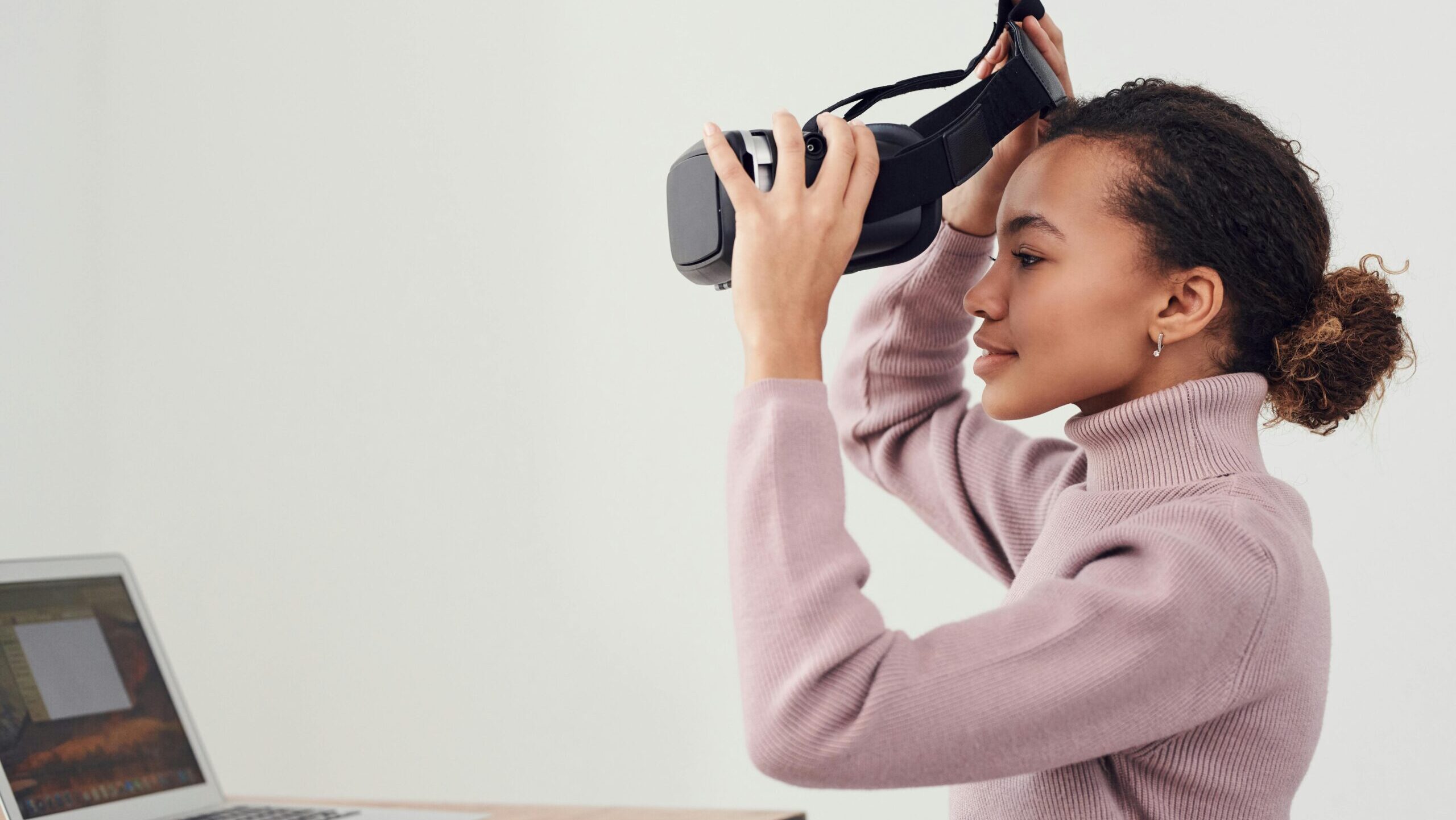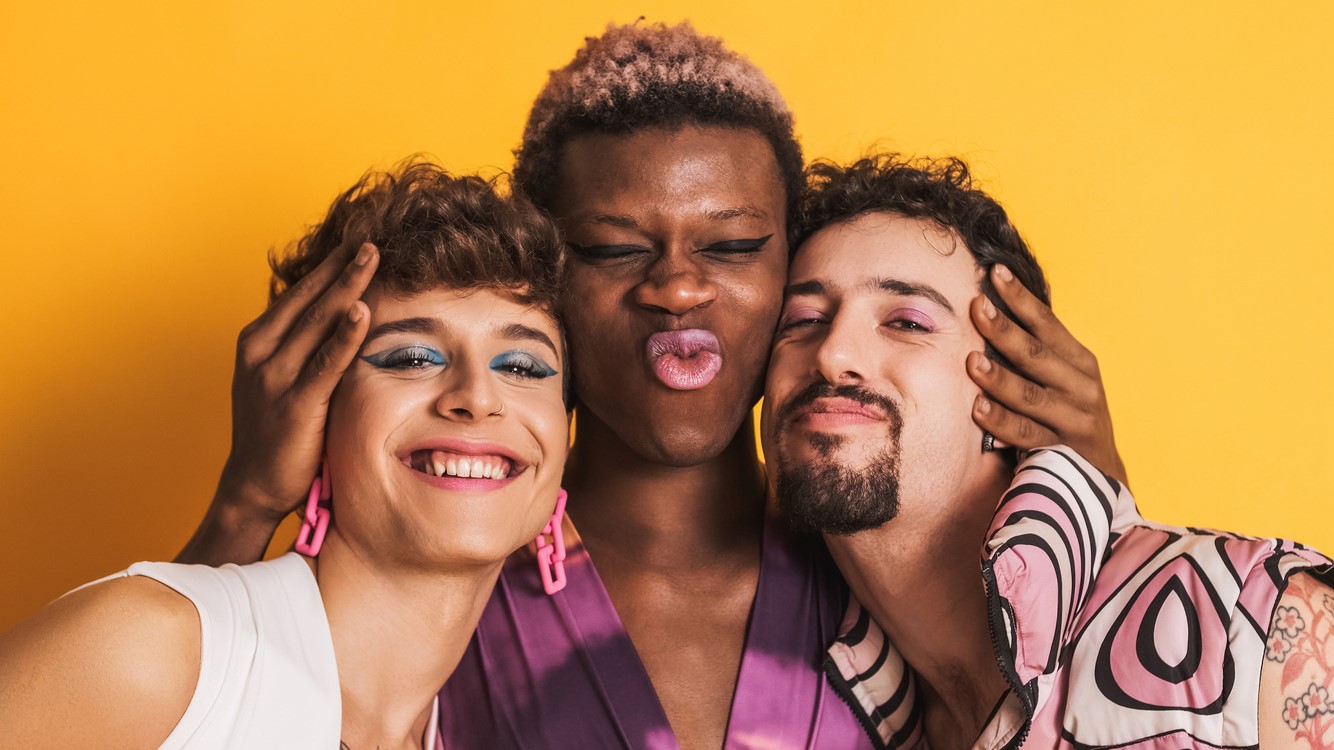What will elicit more realistic reactions? Two-Dimensional or Virtual Reality? First-person or third-person point-of-view?
The University of British Columbia’s Psychology Department explores these modern questions through the research of MA Students Natalie B. Brown and Faith Jabs and Ph.D. student Sonia Milani. Co-supervised by Dr. Alan Kingstone and Dr. Lori A. Brotto.
Their study “Exploring Women’s State-Level Anxiety in Response to Virtual Reality Erotica,” published in the Journal of Sex and Marital Therapy, not only broadens our “understanding of virtual erotica experiences but also opens new avenues for the nuanced study of human emotions in virtual settings.”
What is Virtual Reality?
Virtual Reality is a technology that immerses users into a “three-dimensional computer-generated world that provides sensory inputs, including visual, audio, and tactile feedback”. They can interact with a seemingly real world – creating lifelike experiences that go beyond the capabilities of traditional two-dimensional views.
The immersion of virtual reality has transformed it into a valuable tool across various fields, such as education, physical therapy, surgical medicine, social skills training, and mental health. The adaptability of virtual reality allows its application in controlled settings. With it, researchers can study complex behaviors and psychological responses under various conditions.
The researchers note the use of virtual reality in understanding and treating anxiety and other psychological conditions such as sexual aversion, is especially promising.
Methodology

Participants were recruited from the University of British Columbia’s Psychology Department Human Subject Pool. They had to meet specific criteria, including being comfortable viewing explicit videos and being at least 18 years old. After signing up, the participants completed online questionnaires. They attended a lab session where they were briefed, consented, and introduced to the virtual reality setup before proceeding with the study tasks.
The research demographic comprised 38 cisgender women, primarily heterosexual, with the majority being single at the time of the study. The age range was from 19 to 31 years. Additionally, there were various ethnic backgrounds represented including East Asian, Euro-Canadian, and South Asian, among others. And, some of the participants had prior experiences with virtual reality technology.
The women were shown both neutral and erotic videos in the two modalities, two-dimensional and virtual reality. They were viewed from different points of view, first-person and third-person. This allowed the researchers to measure changes in anxiety and sexual presence. Helping them understand how participants reacted to more or less immersive stimuli.
Researchers used repeated measures ANOVA (Analysis of Variance) to compare the effects of video characteristics on anxiety levels. Thus, providing a comprehensive insight into how different video modalities (virtual reality vs. two-dimensional) and perspectives (first-person vs. third-person) can generate more realistic reactions from the viewer.
Realistic Reactions
A significant increase in anxiety was observed from pre- to post-video across all the environments tested. Indicating both virtual reality and two-dimensional modalities can elevate anxiety levels after viewing.
The researchers found no significant main effects from modality alone or viewpoint alone. However, it confirms that first-person virtual reality heightens reactions compared to two-dimensional videos. This underscores virtual reality’s capacity to immerse users and elicit heightened emotional responses.
These findings pave the way to exploring virtual reality outside the entertainment world and into a therapeutic setting.
Connecting it to Therapy
The effect of virtual reality on eliciting emotional reactions highlights its potential as a tool for therapeutic practices. Particularly, it has the potential to address sexual health issues, such as:
Sexual Aversion Disorder: Gradually expose individuals to sexual stimuli in a controlled environment through virtual technology, to help them overcome aversive reactions through systematic desensitization.
Vaginismus: When there is an involuntary tightness of the pelvic floor muscles during attempted intercourse, virtual reality could allow for simulated experiences that help reduce fear and anxiety associated with penetration.

Erectile Dysfunction: Virtual reality can provide immersive environments to reduce performance anxiety and improve sexual confidence.
Low Sex Desire: By creating engaging and realistic experiences, virtual reality may potentially stimulate sexual desire and arousal.
Post-Traumatic Sexual Disorder: Virtual reality could be beneficial for survivors of sexual trauma. It offers a safe space to confront and work through triggers related to trauma in a controlled and secure setting.
Each of these possible applications for virtual reality in a therapeutic environment showcases its budding impact on the patient’s experience. It gives a customizable approach that can be tailored to the specific needs and progress of the individual in ways “where traditional therapy might be limited.”
The Future
“Although the study aimed to examine women’s state-level anxiety, it opened the field further to investigate the broad implications of VR on emotional experiences.”
The researchers emphasize the importance of future studies to deeply analyze how various virtual reality settings and their realism affect user anxiety. They highlight the study’s preliminary nature and call for more detailed scrutiny of participants. Such as their base-level anxiety, past sexual trauma, and sexual function. This could lead to more effective, personalized therapeutic methods.
The study notes that this research requires “replication and further study.” Future research should include a wider, more diverse group of participants. This will allow a better understanding of virtual reality’s effects across different demographics and personalities.
We must move forward with the knowledge that virtual reality is not just a new frontier for entertainment but a promising horizon for enhancing human well-being.



